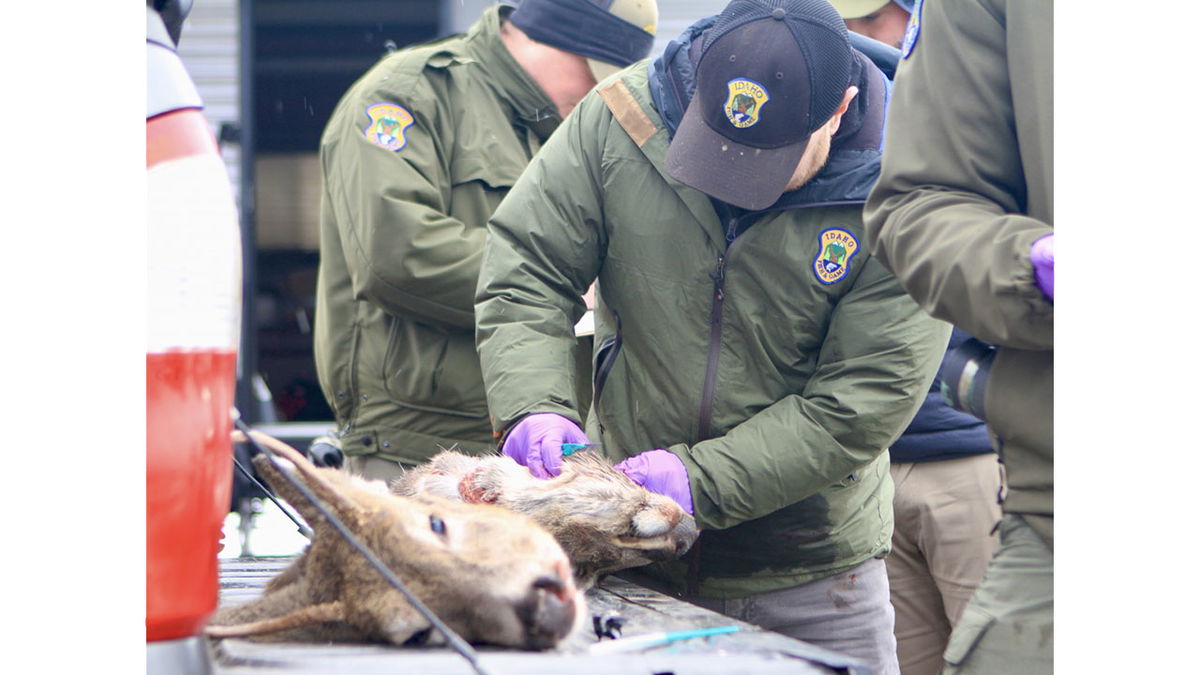Hunters asked to help with Chronic Wasting Disease testing in Salmon Region

IDAHO FALLS, Idaho (KIFI) - Chronic Wasting Disease or CWD was detected for the first time in Idaho in 2021 after more than 20 years of proactive surveillance and testing. CWD is a contagious and fatal neurological disease that affects deer, elk and moose. There is no cure for this fatal disease.
As a result of last year’s detections and as part of its annual surveillance program, Idaho Fish and Game asks hunters to provide samples from harvested deer and elk to help determine how widespread the disease is and the prevalence of infection. Testing also allows hunters to know if an animal that they harvested has the disease.
Annual sampling in Lemhi and Custer counties occurs in Units 21, 21A, 29, 30, 30A, 37 and 37A. Units 28 and 36B have been added this year as additional focus areas.
This fall, deer and elk hunters who hunt in these areas are highly encouraged to have their harvested animals tested. Hunters in other areas can also submit samples from their animals.
Hunters can provide a CWD sample several ways:
- Deer and elk heads can be brought to the Salmon Regional Office for testing, or hunters can drop their lymph node samples off 24 hours a day at designated sample collection sites. Local collection sites include Fish and Game’s Salmon Regional Office, North Fork General Store, Stage Stop in Leadore, and Stephens Gulch near Challis. Backcountry drop off locations include Lower Loon Airstrip, Cougar Ranch Airstrip, and the Thomas Creek Airstrip. Sampling kits and instructions are available at these sites.
- Visit a Big Game Check Station at Stephens Gulch near Challis or the Weigh Station near Carmen beginning Oct. 10, where Fish and Game employees can collect a sample and provide hunters a way to check testing results.
- Hunters may request a CWD test sampling kit if they want to extract the lymph nodes themselves and have them tested. Fish and Game will provide the kit and testing is free. Hunters should allow at least a week for delivery of the sample kit. Hunters can request a test kit and pick it up at a Fish and Game regional office. How to remove lymph node instructions can be found on the Fish and Game website, as well as a how-to video. Testing cannot be done using meat from the harvested animal.
There is no live test, vaccine or cure for CWD, and it is virtually impossible to remove from the environment. Fish and Game’s goal for CWD is early detection, containment and management.
Some states with CWD in their deer and elk herds have documented long-term population declines and shifts in age structures leading to fewer mature bucks and bulls when the disease was left largely unmanaged.
CWD was first found in Idaho deer in 2021 in the central part of the state near Whitebird, ID. To date, there has only been confirmed cases of CWD in Idaho County.
According to the U.S. Centers for Disease Control and Prevention, there have been no reports of CWD infection in people. However, in the interest of safety, public health officials encourage people to not eat meat from animals that test positive for CWD, and hunters should follow health agencies' precautions and recommendations.
For more information, visit Fish and Game’s CWD in Idaho webpage or contact the Salmon Regional Office at (208) 756-2271.






